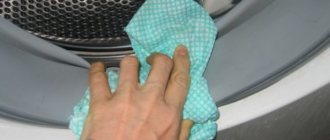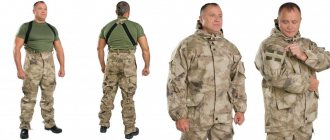What is this text about? In this text we will answer the following questions: what to do to make a knitted hat fit? What to do to make the hat fit? Does the hat stretch or wear out? We'll tell you how to return her to her previous size.
Over time or under improper washing conditions, woolen items can decrease in size or, on the contrary, stretch. This also applies to wool hats. Losing the shape of a wool product is not a reason to throw it away and spend money on a new one.
In this article we will look at what to do if the cap is stretched, what options there are to correct this situation and what is needed for this.
Reasons why a hat may stretch
Like any woolen item, a hat can stretch and take on a shapeless, sloppy appearance. The reasons why this may happen are:
- automatic washing. The knitting of hats is usually weaker than other woolen items and this can cause both shrinkage and stretching of the product. It is advisable to hand wash such items;
- time factor. After some time of wear, the garment may well wear down one or even two sizes;
- improper storage. Some people, after the winter period, in order to maintain the desired shape, pull the hat onto a jar or mannequin, which over time will cause stretching.
Why is product shrinkage necessary?
When buying home clothes in online stores (robes, T-shirts, tights), it is quite difficult to guess the sizes, especially if a person is making a purchase for the first time. Of course, sometimes there are opposite situations, when a thing shrinks on its own and needs to be stretched. For example, a woolen sweater has been damaged and it is not known how to restore it. But more often the opposite happens.
But the good news is that downsizing is much easier than upsizing. This applies to clothes made of any material. However, sometimes the fabric can behave unpredictably. No one can give a 100% guarantee that after proper processing the item will actually shrink and not stretch. Product shrinkage may be necessary in the following cases:
- Clothes that previously fit perfectly have become stretched due to improper storage.
- A child or adult has lost weight, and clothes that previously fit them have now become too big. At the same time, the item of clothing is in excellent condition and suits the person in all other respects.
- Those who have lost a lot of weight and completely updated their wardrobe urgently need to put on an old dress or trousers, but there is definitely no time to gain weight. For example, this happens a few days before the New Year or a desired vacation trip: a woman takes out her favorite elegant dress from the closet, which she has not worn for a long time, and suddenly discovers that it has become several sizes too big.
- After giving birth, a woman wants to wear the same clothes as during pregnancy, because there is no time or desire to radically change her wardrobe.
Cap material
Before the procedure for returning the shape and volume of the headdress, it is necessary to determine what material was used for its manufacture and what additions or combinations of materials are present in it.
This will help not make the problem worse. Products made mainly from knitwear, wool and some synthetic materials are stretched.
A label sewn on the inside of the hat containing information about the composition of the product, acceptable washing methods, temperature, drying, etc. will help you find out this information.
Often, violation of these recommendations entails loss of the shape of the headdress and unpresentable appearance.
How to wash a synthetic hat
- To make synthetic items shrink, when washing in a washing machine, add ten degrees to the water temperature to the recommended values indicated on the label. Wash without conditioner and at maximum spin speed;
- Soak a synthetic cap in ice water for three to five hours. After this, place the product on a terry towel, roll it up and gently wring out the material using wet movements. Then leave to dry horizontally on a thick, dry cloth. As a result, the headdress will be able to fit 1-1.5 sizes;
- Drying in direct sunlight on a radiator or electrical appliance can reduce synthetics by half their size. With normal care, synthetic items should only be dried under natural conditions;
- You can wash synthetics in a washing machine in the “cotton” mode at a temperature of 60 degrees. Do not use fabric softener during the procedure. After the manipulations, also wrap and lightly wring out the cap in a soft terry towel. Lay the product horizontally on a thick, clean cloth and leave until completely dry.
Reducing the size of a wool hat
After the garment has stretched, hot water and washing powder will help return it to its previous condition. The procedure will be as follows:
- Hot water (60-70 degrees) is poured into the container and the hat is placed in it for half an hour. If you have a special product for woolen fabrics, you can add a small amount of it;
- After half an hour, the water in the container will cool down and at this stage the product should be washed. There is no need to rub or squeeze too hard, twisting the product (you can read about proper washing of wool products here);
- after washing, you need to change the water in the container and, unlike the first time, it should be cold;
- the item placed in cold water is left there for 15-20 minutes;
- This is followed by thorough rinsing and proper drying.
The effectiveness of this process is explained by the fact that hot water provokes compression of the fibers, which gives a certain shrinkage to the product, while cold water fixes and consolidates this result.
To achieve shrinkage, it is not advisable to wash a stretched hat. A reduction in size, of course, will be achieved, however, this may not happen uniformly, which will change both the shape of the hat and the quality of the wool, not for the better.
Washing a cotton hat
Children's caps and hats are mainly made from cotton. Note that it deforms very well, so the material can be stretched or reduced in size if desired. With prolonged wear, cotton stretches, resulting in the headdress becoming too large.
A new cotton item that is small can be ironed with an iron with maximum heating temperature and steam function. In other cases, it is recommended to wash the items in hot water.
To reduce a cotton item by one size, place a clean item in boiling water and keep it in the water for five minutes. To make the hat fit 1.5-2 sizes, leave the headdress there for 10-15 minutes. But be careful with colored items, as they can fade a lot in boiling water. In addition, after normal washing, you can dry the cotton in an electric dryer, which will cause it to shrink.
If you are afraid that after boiling water the hat will fade or fade, use machine wash. To do this, use a temperature setting 20 degrees higher than indicated on the label, but not more than 60 degrees. In addition, you need to increase the number of revolutions by 150-200. Washing in a washing machine in hot water and with maximum spin helps cotton items shrink well.
After normal washing, light and dark cotton items can be immersed in boiling water with the addition of fabric softener. Then cover the container with boiling water with plastic wrap and wait five to seven minutes. During this time, the hat will have time to fit to size.
After the manipulations, the cotton cap is left to dry. To do this, the product is first laid out on a flat wooden surface. The material should be blotted with a cotton or mohair cloth. Then the product is dried in the fresh air in the sun until completely dry.
Making a fur hat smaller
A fur hat is reduced for various reasons, it could be its deformation, or maybe it was an incorrectly selected gift. It will be somewhat more difficult to make such a headdress smaller than a woolen hat.
Often, fur hats are made by the manufacturer in several sizes, using adjustable elastic bands that allow you to reduce it by a size and a half. If this kind of convenience is not available, you can make the hat smaller in two ways:
- sew in a fur headdress. This option requires some knowledge and skills in sewing. To begin with, the lining fabric is carefully ripped off, then the fur trim and the seam connecting all the parts, which is located on the back of the head, should be ripped open. The next step is to remove the parts necessary for reduction from both sides. For example, when reducing the cap by two centimeters, one centimeter should be cut off on one side and on the other as well. Here you should take into account the seam allowance and, perhaps, remove not a centimeter, but 8 mm.
This procedure can also be done with caps on a solid base, followed by fastening its parts in reverse order.
- This method involves reducing it using an additional insulating layer of batting or padding polyester. Having decided to use this method, you need to prepare a new lining, since the insulation blank may simply not fit under the old one. After tearing off the “native” lining, the prepared insulation is hemmed onto the insulating cap, after which a new lining fabric is sewn on top. This option is more labor-intensive, however, it allows you to give the hat even better thermal insulation and, if necessary, return it to its original size.
Using a washing machine
If the hat does not shrink after hand washing, you can try washing it in a machine. Place the product in a mesh bag, set the wool washing mode and wait for the result. Dry the product by laying it on a flat surface. If the hat is made of synthetics, you can set the cotton washing mode and spin it at high speed. This method of washing will help the hat become the same as it was before.
But machine washing can make the item too small. You need to use this method after you try to shrink the hat by hand washing in hot water.
In any case, it is better to start with a more gentle option, and then move on to the “heavy artillery”. If the hat has stretched too much and is impossible to wear, try everything that can help.
If all of the above methods do not help, you can try sewing the hat in the back seam. Sewing thin elastic threads into the edge of the hat may help. In the future, to prevent the hats from stretching, handle them more carefully, wash them properly, do not twist them when wrung out, and dry them in a horizontal position. The hat will remain beautiful for a long time and keep you warm.
Felt
Now the fashion for felt hats is returning and you can find them here and there. It is not possible to make such a thing smaller using the wool method. Felt is a capricious material and after washing it will become rough with a hard texture. You can make such a hat smaller using thread, foam tape and a needle.
The outer seam of the grosgrain ribbon (located at the junction of the crown and the brim) is torn off, a foam ring is inserted around the circumference and the seam is sewn up. It is this foam rubber tape of the required thickness that will prevent the hat from falling on your head.
Some useful tips
To reduce the size of a woolen hat after it has stretched, not only the implementation of certain actions aimed at this will help, but also the following nuances:
- shrinkage using hot water is effective provided that the composition of the cap contains fibers from natural fabrics;
- acrylic hats may become matted due to temperature exposure;
- A washing machine should not be used to create smaller sizes. This will most likely simply ruin the product;
- It is always worth checking the headdress for color fastness; if there is a possibility of shedding, you need to take action.
The methods listed above for reducing the size of a headdress are the most effective and relatively safe.
Share the article with your friends and don't forget to join us on social networks!
Influence of material on the result
Cases in which a knitted or knitted item needs to be reduced are not always associated with the natural stretch of the material. An item of clothing may be completely new, and the need to change it is associated with the natural weight loss of the person himself due to diet, sports, or the birth of a baby. Clothes knitted from threads are the easiest to influence:
But polyester and acrylic do not change much in size, but it is possible to influence them. The algorithm of influence is always approximately the same - to wash a thing so that it shrinks, it is necessary in water with a temperature significantly different from the recommendations on the label, or by subjecting it to changes in heat and cold, changing the structure of the fibers of the fabric.
But to do this, you definitely need to know what material the clothes are knitted or sewn from, because the principle of exposure and temperature conditions must be selected individually. This information is often indicated on internal labels, but if the knitting is handmade, you will have to either determine it by eye or ask the manufacturer.
Cotton yarn
Beautiful spring and spring-summer products are knitted from cotton threads. If the cotton is natural, then the item rarely stretches, and accordingly, it will not be possible to significantly reduce it. But since it is now rare to find 100% cotton, it is still possible to wash it so that it shrinks as much as possible:
- Typically, manufacturers recommend washing this material in water no higher than 40 degrees, so you can safely set it to 60-80 if the product is of neutral pastel colors. Bright shades can fade and ruin the product.
- If you need to reduce the item by another size, then the next step is to place it in 3-5 liters of just boiled water, add fabric softener, seal it with a lid and wait 10-15 minutes.
- After placing the item in the dryer, you can remove another half of the size. Alternatively, place it on a flat surface and leave it to dry in the open sun.
Due to sudden temperature changes, you can achieve shrinkage no less than the size of cotton with the addition of viscose. If the clothes are new, then you will not need detergents:
- Clothes are placed in boiling water if they are pastel in color. It is not advisable to subject bright shades to temperatures above 80 degrees.
- As soon as the water reaches room temperature, you should squeeze out the product and immediately place it in a pre-prepared bowl with cold water and pieces of ice.
- After half an hour, squeeze well and spread on a flat surface on a light towel. For greater effect, dry in direct sunlight or spin in spin mode at highest speed.
If all the above did not produce results, it means that the knitting threads were shrunk before making a product from them, which is often practiced in both industrial and hand-made production.
Secrets of wool and silk
Warm and comfortable woolen jackets and sweaters stretch quite quickly with frequent wear. Movies often play out the moment when an unlucky hero takes a toy-sized jumper or pants out of the washing machine instead of a full-sized adult one. This can actually happen if you wash a knitted item at a very high temperature using a machine. If the goal is to wash the jacket so that it shrinks one or two sizes, it is better to roll up the sleeves, and then:
Washing silk
Such things cannot be washed in the washing machine. They shed and lose their shine. The procedure is carried out manually.
- First rinse in warm water.
- Then they are hung out to dry on an open balcony or outside.
Products made from silk fabric require a special approach. An automatic machine is clearly not a help here. To shrink something made from such a delicate fabric, only manual mode and low temperature are suitable. It is better to dry silk in the open air to avoid deformation.
If this method does not bring the desired result, the shirt and other items can be placed in warm soapy water for 20-30 minutes, washed, and then dried in a draft.
How to reduce your denim size by washing
How to wash a jacket or pants made from real jeans so that they become a couple of sizes smaller? Such products become slightly shorter and are already machine washed using the highest possible water temperature (90°C). Automatic twisting should also be set to maximum (1000 rpm or more).
But this should not be done if the trousers or jacket are stretchy (contain stretch).
What can you do with stretchy jeans to make them shrink a little? Wash them using the maximum permissible water temperature (according to the label) and wring them well. Place to dry vertically in a well-ventilated place.
Secrets of knitwear
Knitted items are not necessarily handmade using knitting needles or knitting machines. The finest knitwear also belongs to them, because this is how the name of this intricately woven fabric is translated using special equipment, where natural fibers of cotton, wool and flax are twisted together with synthetic ones to create a more durable and elastic structure.
Accordingly, knitwear has the properties of both natural and synthetic fabric. It is made from:
- jumpers and dresses;
- hats, gloves and scarves;
- stockings and socks, tights;
- sportswear;
- underwear.
It is because of its elasticity that knitted fabric stretches over time. The synthetic fibers in its composition do not contribute to the rapid shrinkage of things, because synthetics are practically not affected by hot water temperatures.
It is important to determine which natural fibers are used to create a knitted item, and choose a washing method for shrinkage depending on whether it is wool or cotton, and if it is silk, then it is unlikely to do without a tailor.
Sometimes it happens that the tags are cut off and it is difficult to determine the exact composition of the knitted product. Then the universal method is applied:
- soak clothes in water 60 degrees for half an hour;
- stretch it vertically and wrap it in a terry towel for 10 minutes to remove excess liquid, squeeze lightly;
- spread out on new mat until completely dry.
The procedure must be performed every month, since items of such weaving are still subject to stretching during wear.
To prevent the hats from losing their shape after washing, they can be placed on an inverted glass jar of the appropriate size without wrung out first.
Stretched underwear is washed at 50-60 degrees. It is advisable to turn the dryer on at maximum temperature or let it dry in the sun in a horizontal position. You can speed up the process using a hairdryer; you need to turn it on to the highest heat setting.
It is recommended to remember the “golden rule”: every 10 minutes of being in boiling water, remove one size from wardrobe items made from natural fabrics. Knowing this, you can vary your desires depending on the structure of the fibers of the product, and also experiment with the temperature of the water. If everything that is usually used to shrink the material does not bring the desired result, then you will have to have the item sewn in by a tailor, and then maintain the size using washing features.
«>
Additional ways to shrink things
Option #1
Let's consider it.
- Set the washing machine to exactly 60 degrees and wash your clothes.
- The spin mode should be standard.
- Let dry at the highest possible temperature. Of course, if your washing machine has such a mode.
Option No. 2
For example, you have a cotton dress and you have lost 1 size. Clothes can be made smaller by alternating high and low temperatures. If the clothes are clean, then the procedure can be carried out without powder.
The instructions include several steps.
- The dress should be soaked in water close to boiling water.
- After the water has cooled, you can wring out the item.
- Pour cold water with ice into a basin and throw the clothes in there.
- 20 minutes will pass, after which wring out the clothes a little and place them on a large towel (clean).
Do not throw synthetics or silk into boiling water.
Option #3
How to wash an item so that it fits 1 size? Modern irons have a device for releasing steam.
- Set your iron to maximum. Let it heat up.
- Iron, for example, a dress using steam.
It is easiest to change the size of underwear and clothes for the house, the most difficult to work with are jackets, blazers and jeans. Also, the success of this event depends on what fabric the item is made from. For example, high-quality cotton shrinks very poorly, and the same can be said about wool.
Usually, the manufacturer attaches a label to the side of the product stating what temperature conditions are recommended for washing a particular item. Shrinkage rules depend on these instructions, since the size can be reduced by washing. Before you wash a sweater or pullover to make it shrink, you need to carefully study this information. Here is one of the simplest options, which experienced housewives often use:
- Carefully inspect the product that needs shrinking. If it is in poor condition, there is no point in wasting time, because after all the measures to change the size, the fabric may become even more deformed.
- When inspecting clothing, you should keep in mind that any holes, abrasions, or seam divergences are absolute contraindications for the procedure.
- If the condition of the product is quite satisfactory, it should be prepared for machine washing. To do this, you need to take everything out of your pockets, tear off the foam hangers and metal decorative elements so as not to damage the drum.
- Place the item of clothing in the washing machine, setting the washing temperature 10-20 degrees higher than necessary. For example, if the recommended temperature is 60 degrees, you need to set the value to 80 degrees.
- When the wash comes to an end and the spin phase begins, you should stop the spin speed close to maximum.
- After this, you should rinse the item with any fabric softener.
There is an easier way: wash the desired item of clothing in hot water (it doesn’t matter whether by hand or using a machine), and then immediately immerse the item in ice water. Due to the sharp temperature change, the fabric molecules will shrink, and the item will become several sizes larger. However, particularly delicate fabrics may not withstand such stress and become completely unusable.
The faster a washed item dries, the more likely it is that it will shrink in size. The fact is that during normal drying, which lasts more than 10 hours, the fibers have time to straighten and fully recover. With rapid drying, there is a sharp reduction in fibers and the space between the threads without the possibility of recovery.
Dry clothes prepared for shrinking as follows:
- hang it near heating radiators or a stove, and in summer - in a sunny place;
- for greater effect, place a fabric under the product that absorbs moisture well;
- use a dryer.
To prevent the trousers from shrinking during drying, they are hung with clothespins.
The drying method can also affect the size of woolen items. A wool item can shrink if you dry it after regular washing on a hot radiator.
To shrink an item of cotton clothing, for example a sweater, heat the iron, set the steam output to maximum and process the entire item.
Methods for shrinking other items are based on exposure to high temperatures and contrast washing mode.
There are also these options:
- To shrink cotton, you don’t need to use washing - a good ironing with steam is enough. Wet clothes should be ironed using steam constantly.
- The simplest and surest way is to take your purchase to a studio, where they will accurately measure the required dimensions and do everything quickly, without ruining the fabric or stretching it even more.
- You can sew up your purchase yourself by carefully ripping the fabric along the seams and removing excess material. To do this, there must be a sewing machine and all the tools necessary for such work at home. The easiest way to sew in skirts, where you often need to open only 1 of all seams, measure the required dimensions and cut off excess fabric.
Enterprising housewives have come up with and tried a lot of ways to reduce excessively stretched jeans.
It is known that when there is a sharp change in temperature, natural fibers shrink greatly. Wool, cotton, silk, and linen inevitably shrink after washing. And if you immerse the product alternately in hot water and then in cold water, you can easily reduce your jeans by 1-2 sizes.
We suggest you familiarize yourself with How to wash a down jacket in an automatic washing machine
Hand washing is the safest, gentlest way to shrink jeans. It is used for clothes made from stretch or chambris.
In order for a thing to shrink in size and retain its new appearance forever, the following work must be done:
- Immerse the product in hot water (60°C) for half an hour.
- Wash denim pants or shorts as usual, adding a little powder.
- Rinse in very cold (preferably ice) water. To achieve a sharp drop in water temperature, you can pour ice from the freezer into a basin.
Dry the product on a horizontal surface in a ventilated area.
Machine washable
The method of shrinking jeans using a washing machine is suitable for durable fabrics that contain more than 70% cotton! If they are synthetic or thin summer jeans, the pants may stretch even more.
The product should be washed as follows:
- Set the maximum possible water temperature (90°C).
- Add gel and fabric softener to the detergent compartment.
- Start the cotton wash program.
- It is better to dry in an automatic dryer at maximum temperature. If this is not possible, hang the jeans outside in a sunny place.
Slightly damp jeans can be dried with an iron so that they shrink a little.
To make jeans shrink in size, you need to fill the bathtub with hot water and immerse the product in it in a straightened form. If you add gel or washing powder to the water, you can solve two problems at once: remove old dirt and reduce the size of your panties.
After washing, the dirty water is drained, and the jeans are rinsed without removing them from the bath and filled with hot water again. As soon as the water has cooled, the item is wrung out and hung to dry.
A simple and effective way to make jeans shrink in size is by alternating cold and hot water. The pants are placed in a basin and filled with hot water. The water temperature should be as high as possible for the type of fabric from which the product is made. As soon as the water has cooled a little, pour it out and fill the basin with cold water. The procedure is repeated 5–7 times.
Boiling
Clean, thick cotton can be boiled. The boiling method is suitable for denim and gin jeans.
You can weld your pants to make them smaller like this:
- Turn the product inside out.
- Boil water in a large saucepan and submerge the jeans in the boiling water.
- Cook over medium heat for half an hour.
- Using special tongs, remove the product, wait until it cools down, and hang to dry.
An extreme method for those who want to narrow their jeans so that they fit like a glove. The essence of the method is as follows: put on trousers and sit in a bath with hot water.
When the water cools down, you can get out of the bath, but the torment doesn’t end there, since now you’ll have to dry your jeans on yourself without taking them off. It is better to do this in a sunny clearing, exposing one or the other side to warm rays for uniform drying.
Often, jeans only stretch in certain areas, such as the knees or waistband. In this case, it is not necessary to wash the entire product. Deformed fibers can be restored to their previous appearance through local processing. To do this, pour warm water mixed with conditioner into a spray bottle and spray it onto the problem area, trying to wet the fabric thoroughly. The wet areas are then dried using an iron or automatic dryer. When drying in the usual way, this effect cannot be achieved.
How to wash things without shrinking
Wool
- Before any washing, turn the item inside out. And don't forget to follow the recommendations on the label.
- Wash woolen fabrics separately from other fabrics. It is advisable to separate them by color.
- Follow the cleaning temperature specified by the manufacturer.
- Give preference to detergents designed specifically for wool.
- If the fabric is “fluffy”, be sure to comb the surface of the product before cleaning.
Acrylic
- Acrylic likes to be washed in water at room temperature (this applies to 100% acrylic).
- If a stain appears on the acrylic cap, pre-soak it in a soapy solution for 15 minutes.
- When cleaning, use water softeners.
- It is recommended to wash acrylic fabrics once or twice a week to keep the item fresh and clean at moderate temperatures.
Are you using citric acid?
Oh yes! No
Cotton
- It is also recommended to clean cotton textiles separately from other types of fabrics, separating them by color.
ATTENTION. Do not wash cotton with synthetics as this can cause the fibers to ruffle and cause pilling.
- Colored items that are prone to shedding are best washed at a temperature not exceeding 400C. In this case, use products for colored products.
- Before washing, place the cotton material, turning it inside out, in a special bag.
Washing in SMA
Nuances that can ruin a thing completely
The following can be detrimental to a knitted item:
- ironing,
- drying on a rope or radiator.
In these cases, the canvas may become deformed in such a way that it will be impossible to correct it.
Video: how to irrevocably ruin a wool item
I once bought a synthetic sweater. I was still quite an inexperienced housewife at that time. I washed it by hand and hung it on a line to dry. As a result, I ended up with something very long. I had to think about what to do with this. Fortunately, either short dresses or what they now call tunics (I didn’t know such words then) came into fashion. In general, I found a matching belt, and simply turned the sleeve cuffs inside out and inserted an elastic band into the lower part. I want to say that I wore this mini-dress for quite a long time and was glad that I had come up with a second life for my mistake.











